Alexandria, VA Pollen and Allergy Report for Summer 2023
Pollen Allergy Trends in Alexandria, VA
When is pollen lowest in Alexandria, VA?

February
Lowest month total PPM
Avg. PPM
When is pollen highest in Alexandria, VA?

March
Highest month total PPM
Avg. PPM
How does pollen in Alexandria, VA compare to Virginia?
Alexandria has a lower average PPM than the state of Virginia.
Alexandria yearly avg PPM:
Virginia yearly avg PPM:
How does pollen in Alexandria, VA compare to the USA?
Alexandria has a higher average PPM than the USA.
Alexandria yearly avg PPM:
USA yearly avg PPM:
Is pollen worse this year in Alexandria, VA?
Spring 2023 was worse than spring 2022.
Spring 2023 PPM:
Spring 2022 PPM:
Average PPM in Alexandria, VA
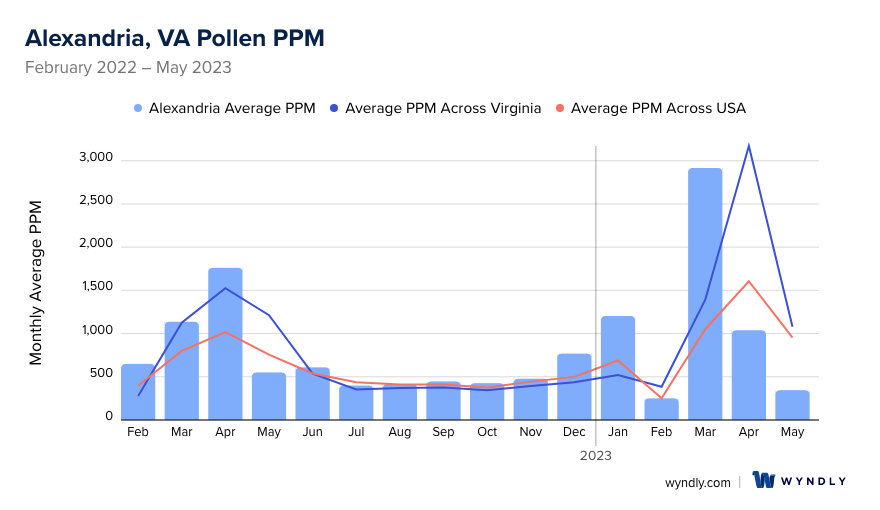
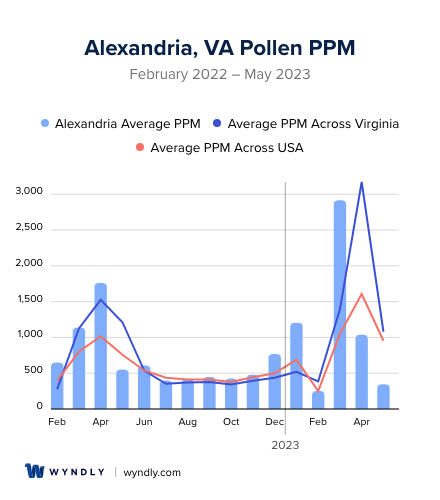
Alexandria, VA Pollen and Allergy Breakdown by Month
Grass
When is grass pollen highest in Alexandria, VA?
April has the highest grass pollen in Alexandria, VA with an average PPM of
When is grass pollen lowest in Alexandria, VA?
December has the lowest grass pollen in Alexandria, VA with an average PPM of
Tree
When is tree pollen highest in Alexandria, VA?
March has the highest tree pollen in Alexandria, VA with an average PPM of
When is tree pollen lowest in Alexandria, VA?
July has the lowest tree pollen in Alexandria, VA with an average PPM of
Weed
When is weed pollen highest in Alexandria, VA?
June has the highest weed pollen in Alexandria, VA with an average PPM of
When is weed pollen lowest in Alexandria, VA?
February has the lowest weed pollen in Alexandria, VA with an average PPM of
Alexandria, VA Pollen Monthly Breakdown by Pollen Type
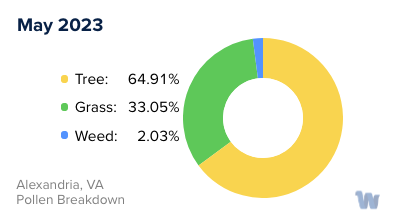
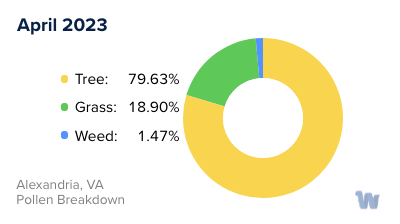
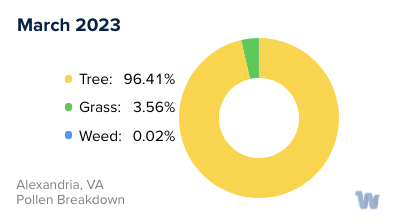
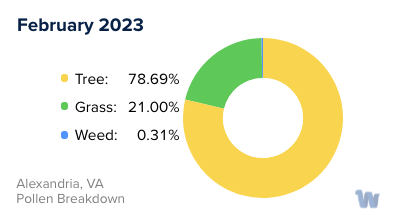
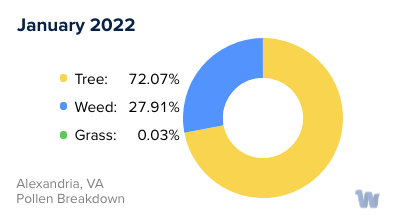
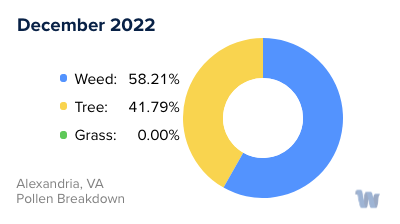
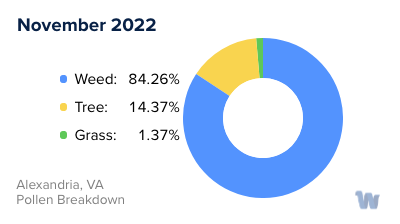
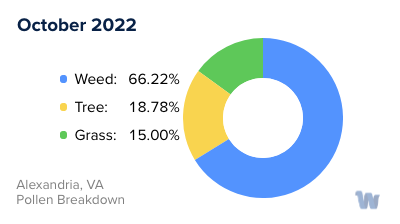
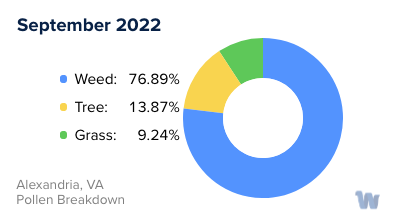
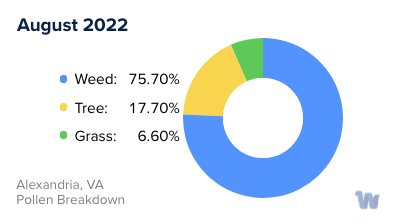
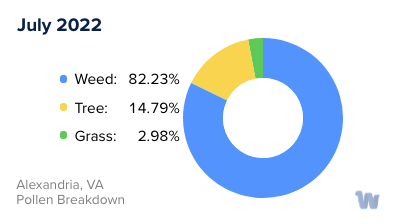
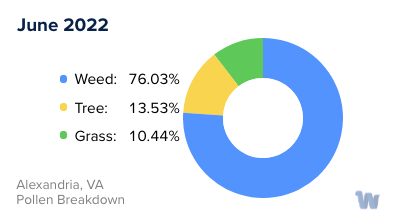
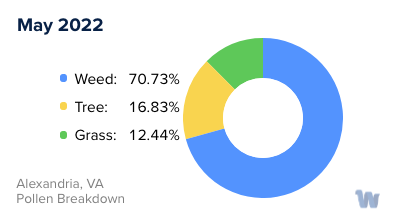
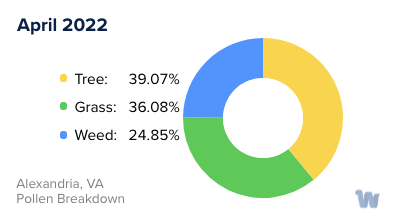
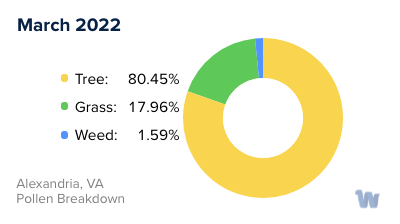
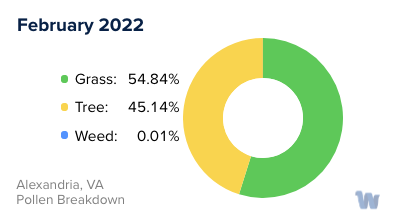
Pollen and Hay Fever in Alexandria, VA
Located in Virginia, Alexandria is a city where residents and visitors alike may find themselves contending with pollen allergies, commonly referred to as hay fever. Understanding the types of pollen and the seasons in which they are most prevalent can provide a deeper insight into the city's allergenic landscape.
Three primary types of pollen are usually responsible for hay fever: tree, grass, and ragweed pollen.
Alexandria's allergy season is often dictated by the blooming cycles of various plants. The most common indoor and outdoor environmental allergens include pollen from both grass and trees. Specific grass and shrub pollens include Bahia grass, Bermuda grass, birch, common ragweed, Johnson grass, mugwort, mulberry, nettle, perennial ryegrass, rough pigweed, Russian thistle, sheep sorrel, Timothy grass, and more. Tree pollens include those from acacia, alder, Australian pine & beefwood, birch, cottonwood & poplar, elm, maple & box elder, maple leaf & sycamore, mountain cedar, oak, olive, pecan & hickory, rough marsh elder, walnut, white ash, and more.
Spring is typically the worst season for allergies in Alexandria. This is largely due to the high amounts of grass and tree pollens that are released into the air during this period. The specific timing and severity of pollen seasons can vary year by year, influenced by factors such as temperature, precipitation, and wind patterns.
In summary, the pollen scene in Alexandria, Virginia is quite diverse, with a range of plants contributing to the seasonal allergies experienced by residents. Understanding the types of pollen in the air at different times of the year can help those susceptible to allergies prepare for the changing seasons.


